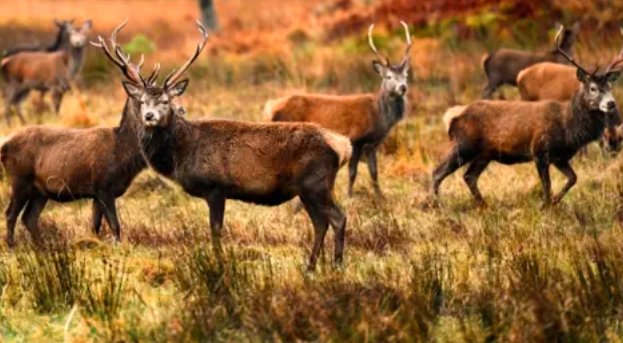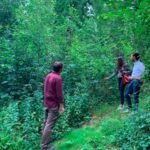Drivers across Scotland are being urged to stay sharp behind the wheel as deer-related crashes become an all-too-common hazard on country lanes and even busy roads. With more than a million deer roaming the nation’s hills, glens and fields, the odds of an unexpected encounter are climbing — sometimes quite literally.
New figures from NatureScot paint a clear picture: an estimated 1,850 collisions a year since 2016, and no sign of that number dropping any time soon.
Scotland’s Four Wild Species, One Growing Problem
Let’s start with the basics. Scotland is home to four main types of deer — red, roe, sika and fallow — with the occasional sighting of the muntjac, which is a more recent arrival.
Red and roe deer are the old locals. Fallow deer came over in the 11th century, and sika have been around for about a hundred years after being brought from Asia. Each has its own habits and habitats, but they all share one thing: a knack for wandering onto roads.
One quick line here.
The Scottish government estimates the wild deer population has doubled since 1990 to roughly one million. That’s a lot of hooves. Rising numbers, combined with heavier traffic, have made the past two decades especially dicey for drivers in deer country.

Hotspots: Where Accidents Happen Most
So where exactly are you most likely to find yourself slamming the brakes? According to NatureScot’s latest analysis, it’s not just the Highlands. Sure, vast stretches of forested land up north are deer heaven, but lower ground areas can be just as risky.
In fact, many collisions happen:
-
Around woodland fringes
-
Near farmland edges
-
On country roads cutting through estates
-
And increasingly, on the outskirts of towns and villages
Places like the A9, which slices through deer territory between Perth and Inverness, are notorious. Glen Etive and parts of the Cairngorms also see their share of unfortunate encounters.
One sentence here.
Even the Borders aren’t immune. As deer adapt to a broader range, they’re popping up in places you’d least expect, from suburban gardens to fields right beside dual carriageways.
Why Are Deer Crashes So Common?
Several reasons collide here, no pun intended. First, deer numbers have ballooned. As natural predators vanished and milder winters helped survival rates, more deer roam freely.
Second, traffic volumes have steadily risen — more people, more cars, more delivery vans, more stress. All of it makes a deer’s life trickier, and a driver’s too.
Then there’s the deer’s behaviour itself. They’re crepuscular — most active at dawn and dusk. Low light, sleepy drivers, and sudden leaps onto the tarmac? Not a good mix.
A single startled deer can set off a chain reaction. Drivers swerve, brake hard, or end up colliding with oncoming vehicles. The damage isn’t always minor either — some deer weigh more than a motorbike.
How Bad Is It? The Numbers Tell the Tale
Here’s a quick look at how Scotland stacks up.
| Metric | Estimate |
|---|---|
| Total deer population | ~1 million |
| Annual deer-vehicle collisions | ~1,850 per year since 2016 |
| Population change since 1990 | +500,000 deer |
| Peak crash times | Dawn and dusk, May and October |
Most accidents peak in late spring and autumn, when deer are on the move during breeding and feeding seasons.
What’s Being Done to Make Roads Safer?
This is where it gets interesting — and a bit frustrating for some communities. Fencing, warning signs, and roadside vegetation management are all part of the mix.
In high-risk areas like the A9 corridor, measures have included:
-
Deer warning signs that actually flash when animals are nearby.
-
Improved roadside barriers to guide deer away from traffic.
-
Nighttime speed limits to help drivers stop in time.
One line here.
But fencing can cause its own headaches. It’s expensive, needs regular maintenance, and can shift the problem further along the road. Some land managers argue it’s better to manage deer numbers more actively instead.
The Human Side: Cost and Consequences
Beyond dented bumpers, these collisions carry real human and financial costs. NatureScot points out that deer-vehicle crashes cause injuries, insurance headaches and in rare cases, fatalities.
Nick, a delivery driver from Perthshire, told a local radio show he’s hit two deer in five years. The first wrote off his van. The second left him with whiplash and a hefty excess to pay. He says he now drives the same roads “twice as slow and three times as anxious” at dawn.
One sentence here.
Farmers and crofters also get caught up in the aftermath. A dead deer at the roadside isn’t just sad — it can attract scavengers, spread disease, or spark local disputes over who clears the carcass.
So, What Can Drivers Actually Do?
No magic wand, but experts say there are a few simple steps that make a real difference.
-
Slow down at dawn and dusk, especially near woodland.
-
Look out for deer warning signs — they’re there for a reason.
-
Remember: deer often travel in groups. If you see one, more are likely nearby.
-
Never swerve sharply. Brake firmly, stay in your lane, and hold the wheel.
Some areas are trialling mobile apps that ping your phone with a heads-up when you’re about to enter a known hotspot. It’s early days, but worth keeping an eye on.
One last line.
In the end, Scotland’s deer aren’t going anywhere. They’re woven into the landscape and the culture. But with a million pairs of eyes and hooves out there, a little care on the road can go a long way to making sure driver and deer both live to see another dawn.


















